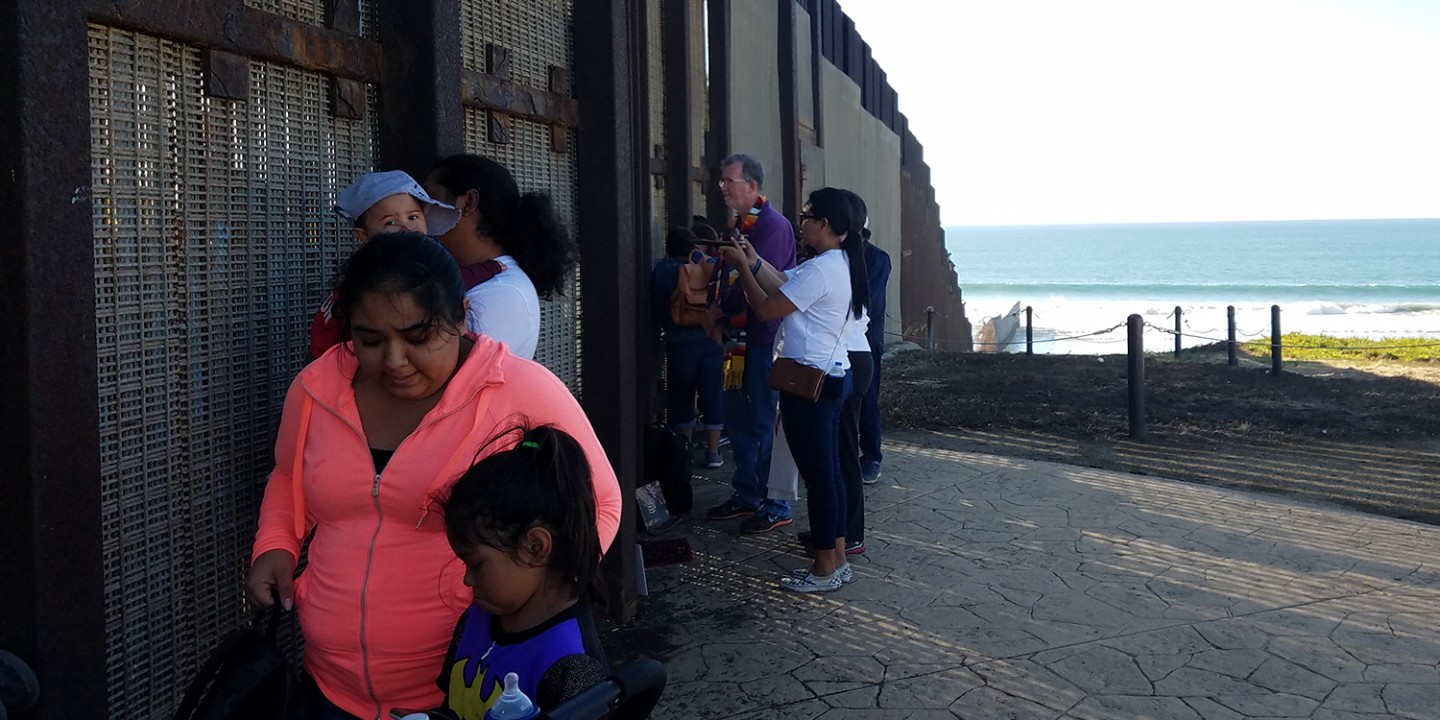Border encounters
The US-Mexico border is rich with ordinary life—not just the sort of stories amplified by political rhetoric.

(Photo by Elizabeth Palmer)
In February, Ken Paxton filed suit against Annunciation House in El Paso, Texas, for “alien harboring, human smuggling, and operating a stash house." The Texas attorney general’s attack on the Catholic organization, which offers hospitality to migrants and refugees, was in line with the overheated rhetoric that is now a part of our daily national diet. As the rhetoric intensifies, most Americans picture danger, fear, suffering, and failure at the border. Stories meant to disturb and trouble us serve the purposes of more than one politician, though they have rarely generated viable solutions.
But if we look through the eyes of those working at the border, we begin to see a different reality. Annelise Jolley invites us to this kind of attention by highlighting the work Latino congregations do with immigrants. Perhaps the most important thing about the US-Mexico border from this perspective is that it is a place of encounter—between different civilizations, peoples, languages, and cultures, between those who are fleeing and those who live in relative safety.
Encounter is a profoundly theological category. When Jewish theologian Martin Buber famously described encounter as an I/Thou relation, he pointed to the “intimations of the eternal Thou.” On the border, such encounters take place daily. In the gospels, we are urged to welcome the stranger, not only for the stranger’s sake but also for our own. In welcoming, we learn that the stranger is a gift. When we welcome the stranger as Christ, we learn about our own interconnectedness and vulnerability. Through encounter, we begin to see God in everyday life, and we are changed.
Political rhetoric would have us forget that the border is an ordinary place. The stories in the media focus on horror and abuse, terror and misery. These stories really happen. But more common are the stories about the mundane business of life: the endless headaches of checkpoints, the friendships and common labor forged between cross-border congregations, the relatives who maneuver ever more difficult barriers to celebrate birthdays, the peanut butter and jelly sandwiches made at a safe house, the snaking lines of US citizens headed to Mexico for more affordable medical care and good restaurants. These untold, even unnoticed, stories are obscured by incessant political rhetoric.
Many people want to know: How do we solve the problem of the US-Mexico border? It is hard to solve a problem we have yet to truly encounter. Politics is often called the art of the possible. In search of the possible, political rhetoric abstracts the beauty, terror, and banality of the border into talking points. Theology, however, refuses to be so reductive about the human beings we encounter in the details of everyday life. When we look closely at the border through a theological lens, we see richness and potential, humanity and compassion, human connection, and neighborly love. Amid the suffering, God is there and always doing something new. We might call this lived theology the art of the impossible.




